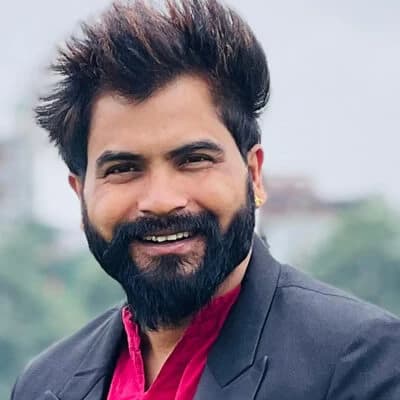Spring and autumn are widely regarded as the best time to trek the Manaslu Circuit. These seasons offer nice weather, clear skies, and availability of food and lodging along the trail.
You don't need to worry about the scenery or views during this adventure. It's guaranteed that you will be stunned by the exceptional views of the world's 8th highest peak, Mount Manaslu (8,163 m/26,781 ft) and other neighbouring peaks in the same mountain range, Mansiri. Besides, you'll also be accompanied by the Budhi Gandaki River throughout your journey.
The region is also culturally rich due to its population of Tibetan Buddhists. As a result, you will also get the opportunity to learn about their culture and traditions while trekking if you're also interested in discovering religion along with nature.
If you're more into experiencing nature's beauty with fewer crowds on the route, I say this trek is ideal for you. It is beautiful; yet, lesser known globally compared to other popular trekking destinations in Nepal, such as Mardi Himal Trek, Langtang Valley Trek, Annapurna Base Camp Trek, Everest Base Camp Trek, etc., currently. Accordingly, it allows you to immerse in the wild peacefully.
Nevertheless, what is important for you is to choose the right time to trek first while planning your journey. Without a doubt, both seasons are perfect for strolling around the Manaslu Region. It is up to you now which one to choose from and to help you out, we discuss them in detail in the sections below.
The season for the Manaslu Circuit trek plays an important role. Although both spring and autumn are the best times for this trek, it does not mean that you will feel the same by trekking in either of the seasons. They both offer different kinds of nature's beauty and experience.
Being an adventure enthusiast, it's always necessary to know when to visit the destination of your dreams to be on the safe side and make your trip successful. Visiting the place at the wrong time costs you your time, money, and all the hard work you did and the sacrifices you made for your holiday trip.
In this blog, we'll dive deeply into the favourable time for trekking today, which I have already cited above. But you might be curious right now and thinking why only these two seasons are labelled the best.
To know it, do me a favour if you'd care to do so, just have a little patience and stick with me till the end. You will be clarified the reasons behind considering the above-mentioned seasons as the best time.
When is The Best Time To Trek The Manaslu Circuit?
The best time for trekking on the Manaslu Circuit Trail is always spring and autumn, where March to May fall in spring and September to November in autumn. These two seasons aren't only ideal times for this trek, but also for any trekking destinations within Nepal or anywhere in the world.
Several factors define these seasons as the perfect time to trek the Manaslu Circuit. They are listed below according to season:
Spring:
- Moderate temperatures and more stable conditions make trekking more comfortable, especially at elevations above where they can be caked in snow.
- Hills and forests flourish with colourful rhododendrons and wildflowers, providing scenic beauty on the trails.
- The air, sunrise, sunset, and views of the mountain ranges are often clear.
- Days are longer enabling clean trekking and plenty of time to spend relaxing before darkness, particularly as summer includes sunset times approaching around 7 PM.
- After spring starts to melt the previous winter snow, more accessible trails offer less slippery conditions than early winter.
- Festivals such as Holi (festival of colour), Nepali New Year, and Buddha Purnima (the birthday of Lord Buddha) happen in this season.
Autumn:
- Follows the monsoon, which clears the air and dirt, revealing bright blue skies and views.
- Autumn's temperatures are neither too hot nor too cold. Good daytime temperatures make it comfortable for trekking.
- For the most part, there is very little rain which means you can count on good dry trails, making trekking conditions favorable in terms of not being at risk for landslides and slippery routes.
- Nepal's biggest cultural festivals: Dashain and Tihar take place this season, providing trekkers with opportunities to see and experience the traditions of local customs.
- Some of the greatest panoramic views of Manaslu and villages along the way are seen while trekking when the weather is good in Autumn. This attracts trekkers and photographers alike.
Knowing all these things regarding the best time for the Manaslu Circuit Hike in detail might have excited you now. But it's also significant to know that weather always plays an unpredictable role. Even during the season, it can betray us at any time.
Thus, you cannot just sit quietly. Instead, you should think of checking the weather forecast for the dates of your trip and also, keep yourself updated with it every day during your trek.
Average Temperature Of The Manaslu Region During Spring And Autumn
Knowing the average daily temperatures at different altitudes of your trekking destination is also important when deciding which season suits you more for your adventure. The temperature in any season doesn't stay the same for the entire day. It actually fluctuates and differs according to morning, day, and night.
Additionally, it is difficult to pick either one of the best seasons: spring or autumn, as they both offer cool weather. Neither too cold nor too hot.
I have to say that the temperature is almost the same in both seasons. Just a little difference you would find if you check it for yourself.
So, to make it easier to decide the best time to trek the Manaslu Circuit between these two seasons, I have prepared a table for you. There you can find the average temperatures in the morning, day, and night at different elevations.
| Season | Lower Altitudes (7,00 to 2,000 m) |
Mid Altitudes (2,000 to 3,500 m) |
High Altitudes (3,500 to 5,100 m) |
|---|---|---|---|
| Spring (March to May) |
8°C to 12°C in the morning. 15°C to 20°C in the day. 5°C to 10°C at night. |
3°C to 7°C in the morning. 10°C to 15°C in the day. 0°C to 4°C at night. |
-5°C to 0°C in the morning. 0°C to 5°C in the day. -8°C to -2°C at night. |
| Autumn (September to November) |
8°C to 12°C in the morning. 15°C to 20°C in the day. 5°C – 8°C at night. |
3°C to 7°C in the morning. 10°C to 15°C in the day. 0°C to 4°C at night. |
-4°C to 0°C in the morning. 0°C to 6°C in the day. -8°C to -3°C at night. |
Is It Safe To Visit The Manaslu Circuit Trek During Off-Season?
Winter and monsoon are considered off-season for Manaslu Circuit Trekking. In terms of the months, December to February fall in winter and June to August in monsoon.
Below are the aspects that clarify these two seasons as off-season for trekking:
Winter:
- Trekking in the Manaslu Region can be extremely cold (often below freezing), which makes trekking uncomfortable and potentially dangerous for trekkers who are not prepared with the right clothes and equipment.
- Trails can often become blocked or unpassable due to the amount of snow accumulated on the trails (especially mountain passes and upper regions). This could lead to accidents such as slips and avalanches, meaning that trekkers could become cut off from trails.
- During winter, most tea houses and lodges in high-altitude locations will not offer accommodation. This reduces accommodation options for trekkers whilst in between or on trekking journeys.
- The health risks from cold weather increase at high altitudes. The low temperatures for a prolonged time raise the chances of frostbite and hypothermia.
Monsoon:
- Brings heavy and consistent rainfall, resulting in muddy, slippery hikes and an increase in landslides.
- Clouds and fog will cover the mountains and impair views, which is one of the main attractions of trekking.
- Wet conditions will increase the chances of leeches and insects which is uncomfortable when trekking; particularly in the low-elevation jungle regions.
- Too much rain can damage the paths, create floods, and wash away bridges; hence creating unsafe or impassable trekking routes in certain areas.
Now, you've learned the reasons behind considering winter and monsoon as the off-season. Just because these two seasons are believed to be unfavourable times does not mean it ain't safe to go for the Manaslu Trek.
In monsoon, it'll be better for you not to plan your trek even in a dream, as the trip becomes completely challenging. However, you can still make a plan to go on a trek in this region in winter, especially in December.
December is just the start of the winter and snowfall usually doesn't begin in this month. The only problem you will face is freezing temperatures in the morning and at night. In the daytime, the sun is bright most of the time, which provides you warmth while hiking.
But if you're a beginner, then better not to think about going for the Manaslu Trek any time during the off-season. Not even in December. If you're an experienced hiker and seeking extreme adventure this time, you can plan for this trek in December.
All you will need to do is pack warm clothes and monitor the weather forecast every day during trekking. So, the thing is yes it's safe to trek the Manaslu Circuit at some point even during the off-season and that's in December.
Average Temperature Of The Manaslu Region During Off-Season
As I have already stated, winter is still suitable for Manaslu Circuit Trekking, even though it falls under the category of off-season. But the thing to keep in mind is you will feel extremely cold for sure in the morning and at night, which makes your trek challenging, especially on the day when you cross the Larkya La Pass.
You'll need to leave your hotel early in the morning that day because winds usually get heavy and strong at the top point after 8 AM, making it extremely hard to cross the pass. Therefore, you will need to make it through the other side of the pass before 9 AM. For that, an early hike is necessary that day.
So, if you're an experienced hiker and prefer to choose to trek in the Manaslu Region during winter, I hope you already know that your journey will be demanding. Anyway, to help you prepare, I have designed a table showing the average daily temperatures at different altitudes during the cold season, including the monsoon.
| Season | Lower Altitudes (7,00 to 2,000 m) | Mid Altitudes (2,000 to 3,500 m) |
High Altitudes (3,500 to 5,100 m) |
| Winter (December to February) |
2°C to 5°C in the morning. 6°C to 10°C in the day. 0°C to 3°C at night |
-5°C to 0°C in the morning. 2°C to 6°C in the day. -7°C to -2°C at night. |
-12°C to -6°C in the morning. -5°C to 0°C in the day. -15°C to -8°C at night. |
|
Monsoon (June to August) |
15°C to 18°C in the morning. 20°C to 25°C in the day. 12°C to 15°C at night. |
10°C to 14°C in the morning. 15°C to 20°C in the day. 7°C to 10°C at night. |
3°C to 7°C in the morning. 6°C to 10°C in the day. 0°C to 4°C at night. |





